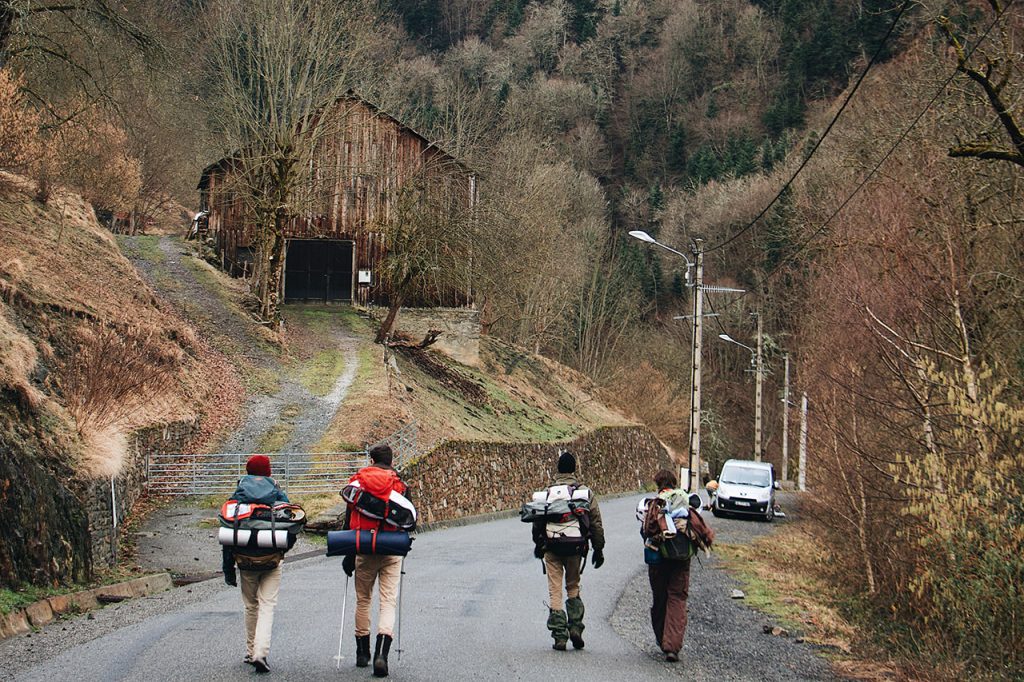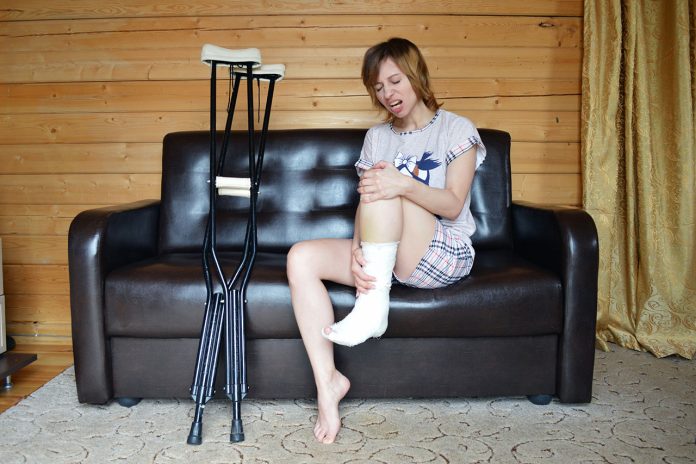For avid hikers, a ruptured Achilles tendon can feel devastating. This common athletic injury requiring surgical repair and extended rehabilitation sidelines you from beloved trails. However, with a strategic, gradual approach focused on rebuilding, you can successfully transition back to hiking after an Achilles tendon rupture recovery. Use these essential tips to ease back into activity properly.
Table of Contents
You may also want to know: How to start hiking
Follow Post-Op Rehab Protocol
An Achilles tendon rupture is a serious injury typically requiring surgical repair, casting/bracing, and extensive physical therapy rehabilitation. Don’t attempt to return to any hiking before completing your full post-operative recovery protocol as directed by your surgeon and PT. This protects the delicate repair work allowing your tendon to regenerate.
Sharp pain with certain motions or weight bearing indicates your tendon isn’t ready for activity. Regaining a full range of ankle flexion and strength in your gastroc/soleus complex is critical before considering hiking again. Skipping key rehab benchmarks risks re-rupture and long-term mobility limitations. Patience is key with this injury.
Consult Your PT About Readiness
Your physical therapist is the best resource on if and when your body may be prepared for introductory hiking after an Achilles rupture. They will assess criteria like incision healing, knee and ankle range of motion, strength, proprioception, balance, and gait mechanics. Getting the green light to hike again is a collaborative decision based on demonstrated progress.
Ask your PT to watch your walking and stair mechanics for compensation patterns favoring the Achilles repair side. They may recommend further training to target lingering weaknesses before releasing you to higher-impact activity. Ankle and knee stability must be solid to avoid compensations causing other injuries when re-conditioning. Their expertise guides smart return to hiking timelines.

Start With Short, Simple Hikes
When first getting back to the trails after Achilles tendon surgery, choose very simple routes without distance, technical terrain, or major elevation gain. Opt for easy nature trails in town or gradual valley paths you can bail out on quickly if issues arise. Avoid committing to remote backcountry treks with mileage requirements when starting out.
Even just 20-30 minutes on flat ground provides a good test hike to build confidence while gently stressing your healing tendon. Take it one cautious step at a time – your tendon took months to fully rupture and will take a year or more to completely regenerate. There’s no rush to return to intense activity.
Use Trekking Poles
Using trekking poles is strongly recommended when navigating variable hiking terrain after an Achilles repair. They enhance stability, improve balance, absorb impact through your arms versus just ankles and knees, and reduce the risk of falls on uneven ground. Consider planting poles with each step on the Achilles side for optimal support.
Look for shock-absorbing, anti-vibration trekking pole tips to cushion each plant and diffuse forces up the healing tendon. Adjust pole length to provide moderate weight support – don’t offload all weight, but do redistribute some impact off ankles temporarily. Wean off poles as leg strength returns over a year later.
Wear Proper Footwear
Having secure, stable, and supportive hiking shoes or boots protects vulnerable ankles and feet critical for reducing Achilles re-strain when getting back on the trail after a rupture. Prioritize motion control, shock absorption, and snug lacing to limit shear on the tendon.
A roomy toe box prevents pressure over your recovering surgical incision. Consider adding custom orthotic inserts if you need additional arch support. Break in footwear gradually pre-hike. Proper shoes provide essential cushioning as you rebuild impact forces gradually over a year. Don’t just wear old running shoes.
Take It Slow
Patience and moderation are vital mindsets when easing into hiking again after an Achilles rupture. Your tendon fiber strength and ankle stability decline substantially after immobilization and repair. Avoid resuming strenuous paces, distances, or terrain immediately.
Start with only 1-2 miles over flat, stable ground. Stop frequently for breaks. Don’t compare to pre-injury fitness. Celebrate small milestones. You need ample time to progressively load your tendon again once healed. A year later, introduce gentle hills. After two years, avoid only high-mileage trail runs.

Avoid Strenuous Descents
When recovering from an Achilles rupture, descending steep slopes requires special care. Allowing your full weight to free fall downhill too soon stresses the healing tendon before it’s ready for such impact. Avoid extremely steep downhills for at least a year after surgery.
Instead, strengthen eccentric heel raises first. Then very gradually work up to short, mild downhills using a zig-zag pattern with poles for support and frequent breaks to rest the tendon. Lean forward to keep weight centered over feet, reducing Achilles strain. Only begin substantial descents once your PT confirms heel raise and squat strength.
Uphill hiking places less shear force on your Achilles versus descents. Build downhill capacity slowly over the years, not all at once. Patience is key to gaining lifelong mobility.
Practice Balance and Proprioception
The immobilization period after Achilles rupture and surgery disrupts balance and joint position sense. As your PT recommends, engage in rehabilitative balance exercises to retrain proper ankle neuromuscular control. Try single-leg standing, tandem/staggered stance, wobble boards, and gentle lateral agility drills.
Just standing on one leg while brushing your teeth begins rebuilding fundamental balance reactions. Start with support like a wall or chair, working up to unsupported balance training to challenge foot intrinsic muscle stability. Focus on quality repetitions to ingrain proper movement patterns, preventing future falls or compensation injuries.
Strengthening the Lower Leg and Ankle
Atrophy after immobilization means taking time to gradually strengthen the lower leg and ankle stabilizers before intense activity. Heel raises, eccentric heel drops, toe raises, resistance band routines, and isometric holds strengthen tendon attachments in all planes without overloading tissue initially.
Avoid activities like jumping that physically and plyometrically load the Achilles for 12-24 months until the tendon completely remodels. High-impact loading too soon risks re-tearing delicate collagen cross-links needing time to mature after surgical repair. Follow your PT’s guidance on strength progression timeframes.
Stay Close to Help
While working toward greater hiking independence again, avoid remote backcountry routes far from an exit when first returning after Achilles’ recovery. Stick to well-marked trails with easy bailout options if issues arise. Bring a partner and consider a satellite communication device if going remote.
Tell someone your hike plans and check-in times. Arrange to get picked up at the trailhead rather than finishing solo until strength rebuilds over a year later. While carefully progressing activity, play it safe in case the unexpected happens out of cell service with a vulnerable tendon.

Watch for Warning Signs
When gradually returning to hiking after Achilles tendon surgery, monitor for any concerning symptoms requiring rest and prompt evaluation. Stop all activity if you experience localized pain along the tendon repair more than 3-4/10 in intensity, or any sudden onset of acute pain, pop, or snap sensations.
Also see your doctor for evaluation of visible gaps, muscle herniation, obvious swelling, feelings of tendon shortening, or inability to bear weight through your full normal range of ankle motion. Don’t delay in reporting any issues. Some mild discomfort may occur, but anything more serious warrants immediate tendon assessment.
Appreciate the Return
Getting back to beloved outdoor hiking activities will take many months after a serious Achilles rupture. However avoiding setbacks through a carefully guided, incremental return is crucial to lifelong mobility. Celebrate your body’s amazing capacity to eventually heal this tendon with proper rehabilitation.
Stay positive through the process. Focus on the feeling of breeze, birdsong, and dirt beneath your feet again when you do return to gentle trail hiking under your own recovering power. Consistent prudence and patience allow more expansive adventures in due time.

Related Links:
https://en.wikipedia.org/wiki/Hiking




